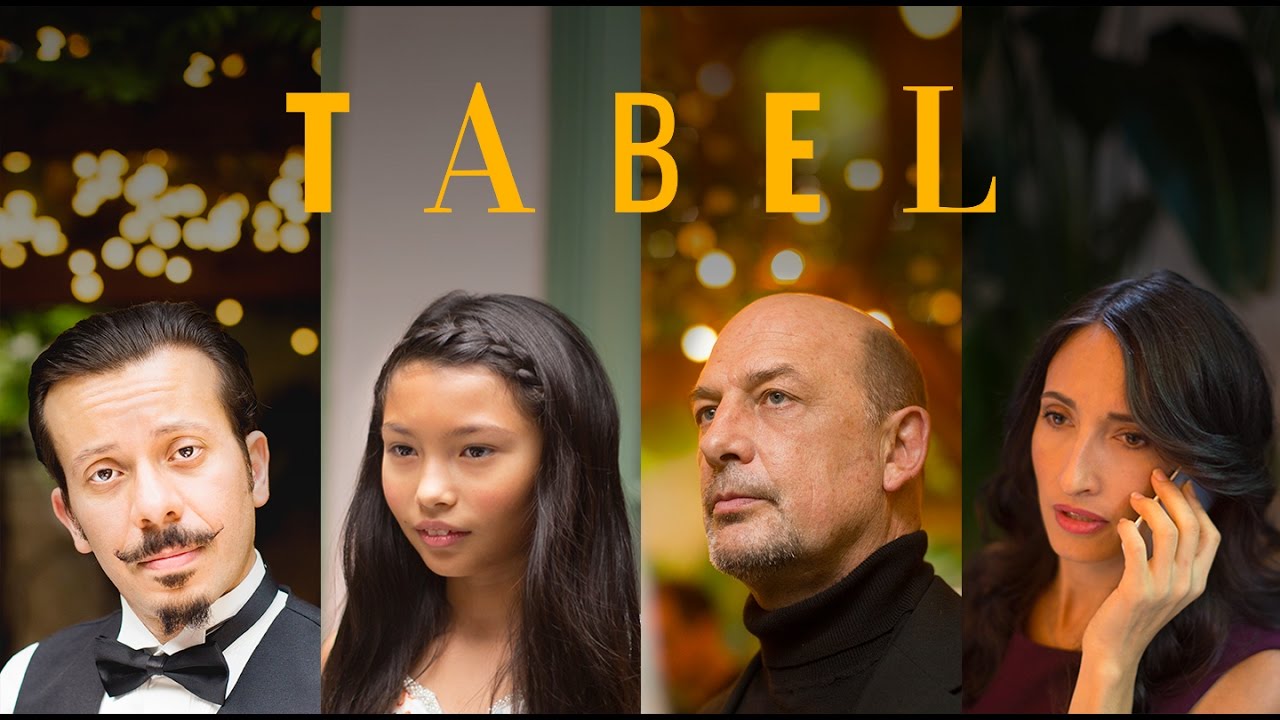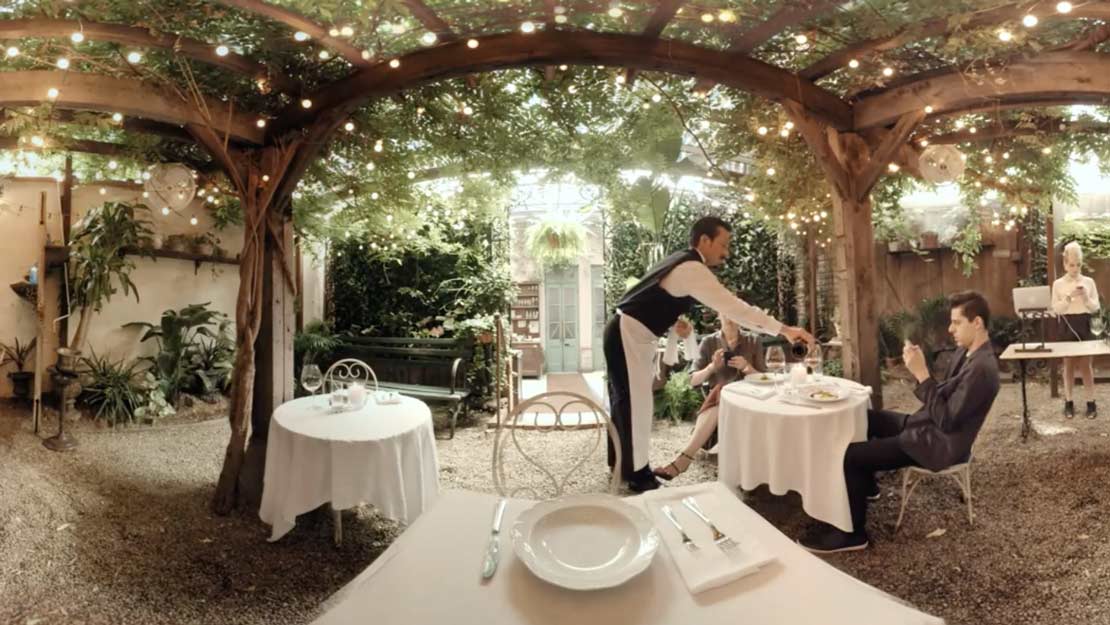Graduate paper: Tabel experimental VR film
Tabel is an experimental VR film project from Google’s Art Copy and Code project. The 7-minute interactive short film may look just like a scene in the middle of the restaurant which ended with a fire in the kitchen, but it has a much more powerful meaning behind it, it’s about climate change.
Tabel is a word play of table, as the whole movie mainly focused on the people of the surrounding tables. This interactive movie is different from others in a way that they use unique audio technique. The viewer will be placed in the middle table and can select which table to listen or eavesdrop to by turning their head with the headset or move the screen if viewed on a computer to the direction they want. They will be able to hear the conversation of the table that they are looking at. There are 6 storylines in total within the 7-minute duration.
While the video is meant to showcase the experimental part of the unique audio technique, the video also intends to emphasize the effects of climate change in a subtle way. While the viewer is listening to all the busy lives of different table, there is a fire in the kitchen. The underlying message is that people are too busy with their lives to notice the effects of climate change. The ending shows a young girl which represent the next generation, asking for dessert, but it would not be possible to cook as the kitchen is on fire. This would make the viewer to think that by the time we realize about the climate change, it might be too late.
Alexis Cox, the project lead for Tabel says the project is an experiment in Virtual Reality and 360 degree storytelling to present the potential of Virtual Reality as a creative platform for filmmaking. She hopes that it can help inspire filmmakers to explore the narrative and technical boundaries of VR storytelling.
The idea of telling the story beyond the headset experience is because they wanted to create an experience for anyone with a smartphone or people who do not have access to a VR headset. The team tried to eliminate the barriers due to the fact that there are still many people who have not experienced VR. Tabel is created using WebVR experience which is browser based that will allow audience to experience Virtual reality in their browser.
Tabel uses an audio technique that compile 9 channels of audio together, 6 of which the viewer can interact by changing the direction of the headset or moving the screen around on their browser. The 6 storylines will unfold simultaneously throughout the film.
Virtual reality is still relatively new with endless possibilities. During the process of producing Tabel, Cox said her biggest takeaway was the storytelling techniques for VR are still undefined. The team had to create many processes along the way. She also added it is important to invite creative engineers into the initial brainstorm. The team came up with the idea of experimenting the audio technique the same time as writing the script.
While Tabel may not be an advertisement, it is in a way promote about the climate change, Cox says VR in advertising is just the beginning of all the possibilities. “Imagine if you could build a world around a brand that a consumer could step into. That's the opportunity for brands. And that's way bigger than advertising.” Virtual reality will be a big part for the branding. It allows the storytellers to create an experience for the viewers, create an experience that the viewers can immerse themselves into the brand. It’s a new world for the producers and the consumers to explore.
In addition, the global search interest in Virtual Reality grew nearly 4 times over past year, but there are still wide range of people who have never tried it. It is one of the reasons why Tabel is created for using WebVR to reach more people. Cox added that it’s time to stop telling people how much they need to try VR, but rather find ways to make it easier for people to experience.
Cox provided 4 practices that will affluence the audiences into VR experiences.
- To create multiple ways for audience to interact with the content and provide instructions for users. As the audience is new to the experience, it is important to have it clear and easy to understand and easily accessible. There are three ways to experience 360 degree content which are the cardboard or headset, the smartphone and computer desktop.
- To guide the audience through the experience by placing the instructions everywhere that the audience can see, such as text next to the content, in the content or even the voiceover.
- To keep the content simple. Most viewers watch YouTube videos through their phone. By creating 360 video and adding voiceover, the viewers can walk through the story by just simply moving the phone around.
- The desktop is also another popular device that people use. As people cannot move the monitor around, the virtual reality on the screen can be simulated through moving the screen by using the cursor.
In conclusion, the Tabel project is an immersive VR film that adds an interactive element of the unique audio technique where viewers can select which conversation to listen to as they move their view direction. However, with an additional element to the 360 video, the content is still simple enough to reach audiences with various devices. They can watch it through their headset, smartphones or desktop.
People who want to use VR to promote their brand or do storytelling should consider keeping the content simple for the end users to view, but may add interesting elements that doesn’t require the viewer to put more effort into viewing or it could lose their interest.


COMMENTS